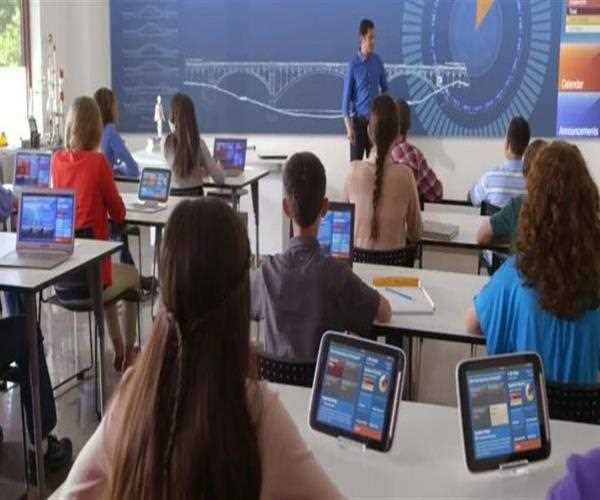
06-Jun-2024 , Updated on 6/6/2024 6:37:05 AM
10 Reasons Why Students Need Technology in the Classroom
The incorporation of technology in the learning process in classroom is not an option anymore. It has revolutionized learning and teaching and made education to be more fun, interesting and easier to access. When there was COVID, virtual was the only means of learning tuition. Here are ten reasons why students need technology in the classroom:
1. Enhancing the Learning Experience
On the topic of ‘Why students should be encouraged to use technology,’ one point possible to make is that technology makes work fun. In place of conventional theories and practices whereby the teacher takes time to explain the salient features of a topic, students can be taken through adventure and game like exercises. This assists the students in their learning process making it easier for them to learn and also to enjoy what they are learning.
2. Teaching for the Digital World
Finally, the requirements of the modern world predict that a person should be intelligent in the technical aspect. Students and every learner must learn how they can utilize the digital platforms, software, and a simplistic form of programming. Education on the use of technology, or digital citizenship, is also important since it seeks to teach people on proper and correct behavior and usage in the digital platform. Due to the advancement in the use of technology, learners are required to change gear and embrace the new implemented tools and software.
3. Personalized Learning
It is a commonly held fact that every student has his or her own way of learning. Technology brings the ability to personalize the levels of learning to cater for every learner to learn at his or her own pace. It gives the student extra practice on the concept being taught while it also provides a student who is familiar with that which is being taught chances to proceed to another level. Specific content and ways of learning improve students’ outcomes because every person has his or her own interests and learning style.
4. Improving Digital Literacy
Thus, with the help of technology, students can become good researchers and good critical thinkers. They learn how to critically assess information that is provided on the internet hence enhancing their search skills. Media literacy is also developed in the process since the students are being taught how to question the data they receive. Technology encourages the development of students to find solutions to real-life problems and critical mindset.
5. Increasing Student Engagement
Technology increases the interest of the students by increasing the interactivity in the class. Any inculcation involving addition of game-like features to learning is what is called gamification and this makes learning very interesting. With the help of interactive applications students become not only audience but the active actors. Virtual reality simulation, online quizzes, and real-world connections ensure knowledge is up to date and fun.
6. Preparing for Future Careers
The structure of employment has been shifting to digital, and students have to face this reality. Technology assists in the building of relevant skills in the modern world such as technology communication skills, problem solving, and flexibility. Thus, incorporating technology in a classroom helps to familiarize students with applications, programs, and equipment that could later be applied at work.
7. Overcoming Educational Barriers
Technology reduces barriers in education. Distance learning brings education to the students in a way that is not restricted by geography since the students can follow the course from the comfort of their homes. Organization of special education support is made more effective by integrating assistive technologies, so all students including those in special education classes are encouraged to learn and achieve.
8. Enhancing Creativity and Innovation
Technology unleashes creativity. Students can write informational texts, draw, narrate a video, or even write a musical piece. Computer coding and programming help in the enhancement of problems solving and thinking abilities. Design thinking involves creativity and rationality, and all of this is channeled towards identifying solutions to problems that are real. The utilization of technology proves to be boundless in terms of creativity and developing new ideas and designs.
9. Access for All Students
Education technology helps in provision of education to all the students and removes barriers of physical and learning disability. It supports differentiation in instruction, implementation for the learners with different learning abilities. This is due to the fact that they help students with disabilities in thou they require some instructions to be conveyed in an extraordinary way, they are in a position to learn like any other student. In this perspective, technology puts every student on the platform to excel in his or her course regardless of the abilities he or she possessed.
10. Preparing for the Tech-World
In other words, schools require the proper structures and connections to take full advantage of technology in their institutions. The organization requires dependable internet connectivity, and sound IT networks. Cybersecurity is also important to avoid loss of the students’ information that is needed for enrollment. These are some of the aspects that should be developed by schools in order to ensure proper learning environment is provided.
Conclusion
Technology integration for instruction is crucial for improvements in the classroom and for the preparation of the future generation. It also enhances social features, facilitates the process of learning, encourages students to be inventive and logical, and longevity to succeed at today’s highly competitive job market. Through the technology, distorted learning procedures can be eradicated and the skills necessary for future employs can be obtained by students. Join me in this process to shape the technology enhanced learning process so that all students will have fun while learning.

Student
An MBA in finance imparts and improves management aptitude, inventive ability, critical thinking ability, and so forth. It offers a real-time experience that fabricates a staunch career foundation for students and working professionals. It helps them to thoroughly understand the financial sector.
Join Our Newsletter
Subscribe to our newsletter to receive emails about new views posts, releases and updates.
Copyright 2010 - 2026 MindStick Software Pvt. Ltd. All Rights Reserved Privacy Policy | Terms & Conditions | Cookie Policy